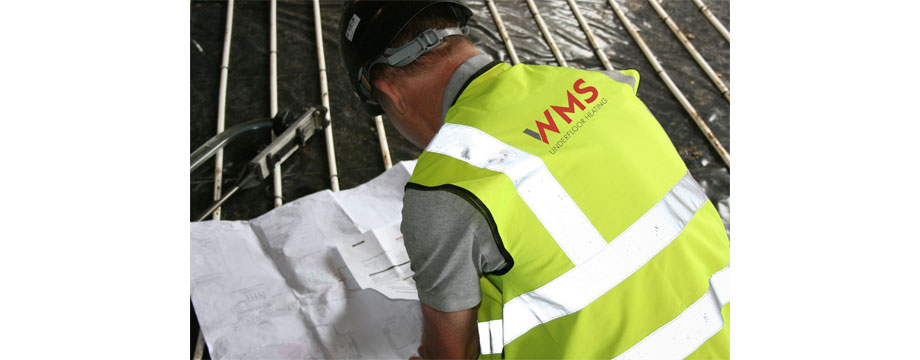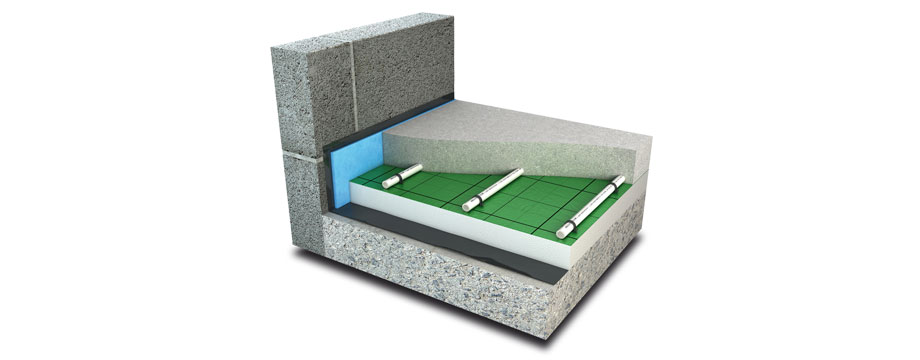 Thanks to the Building Regulations and Part L changes, which come into force this summer, low temperature heating systems will now become the norm for newly built homes. While there is flexibility on which energy source can be used, it is anticipated that heat pumps will become the most specified option.
Thanks to the Building Regulations and Part L changes, which come into force this summer, low temperature heating systems will now become the norm for newly built homes. While there is flexibility on which energy source can be used, it is anticipated that heat pumps will become the most specified option.
Here, Ashley Cooper, Managing Director at WMS underfloor heating, provides an overview of the changes ahead and how underfloor heating and heat pumps can together achieve the ultimate low temperature system.
The changes afoot
“The low water temperature update to the Building Regulations and Part L will be enforced from this June, from which point there will be a compulsory 31% reduction in CO2 from new dwellings, compared to current standards. New home heating systems will also be required to have a maximum flow temperature of 55°C.
“While there is flexibility on how to meet the targets and there are a variety of renewable energy sources available, the Government expects heat pumps will be the primary heating technology for new homes. However, in order for heat pumps to work at their most efficient (COP) level they need to run between 35-45°C – this is something only underfloor heating can perfectly support.”

The most common method of incorporating UFH is to include the pipework
within the floor screed build-up as it doesn’t increase floor build up
Heat pump technology
“In brief, heat pumps move thermal energy from one environment to another, and in either direction to heat or cool a room. This allows the heat pump to effectively bring thermal energy into an occupied space. Heat pumps have been utilised in the UK for many years and are a tried and tested type of high efficiency, low-cost heating.
“In the case of an air source heat pump (ASHP), for heating homes the system absorbs heat energy from the outside into the cycling refrigerant. The heat pump turns the refrigerant into a gas, compresses it and then condenses back into a liquid again which generates heat energy. This process allows the ASHP to bring thermal energy into an occupied space for heating and hot water. Even if it was -10°C outside, there is still enough heat outside for a heat pump to turn into energy – it would need to be -273°C outdoors before there was a total absence of heat energy (0 Kelvin).”
Benefits of using underfloor heating with a heat pump
“Hydronic (water based) underfloor heating covers a greater surface area than radiators and can therefore run at lower temperatures (35°C rather than 80°C). In turn, the demand underfloor heating places on energy sources is significantly less.
“A heat pump, along with the low water temperature requirement of underfloor heating, makes these two technologies a perfect combination. The result is an energy efficient and cost-effective heating system, which meets the demands of the low water temperature update to the Building Regulations and Part L.
“Underfloor heating systems can also be fully zoned, which ticks a crucial regulatory box and ensures no energy is wasted as each zone can be controlled individually from a central thermostat, or even via a smart phone app. Underfloor heating is also safer, creates a healthier indoor environment and requires less maintenance than radiator system alternatives, making it a win win solution.”

The AmbiTak system
Precision system design and installation is key
“When paired together, heat pumps and underfloor heating technologies will provide the ultimate low temperature system. However, accuracy is critically important because, if the system is not designed and installed properly, it won’t reach its required efficiency – the knock-on effect being increased energy bills.
“The result of good heat pump design is an efficient heat pump system which is capable of covering all of a property’s heat demand, regardless of outside temperature. Plus, heat pumps will also last longer if there is less strain on the system and correct design is also a key component of validating manufacturer warranties. As such, it’s important to work with suppliers who can provide expert guidance at both the design stage.”
For further information about WMS underfloor heating, visit www.wms-uk.com.
- Log in to post comments













